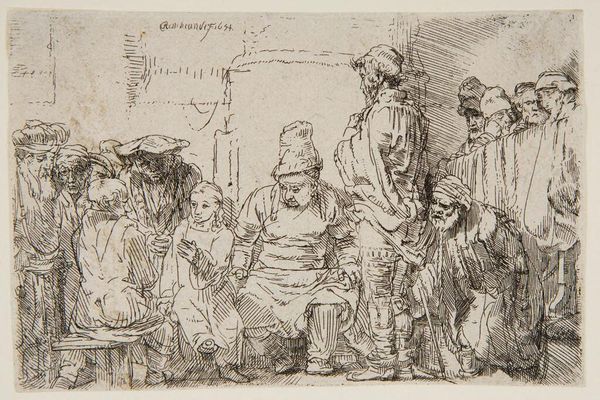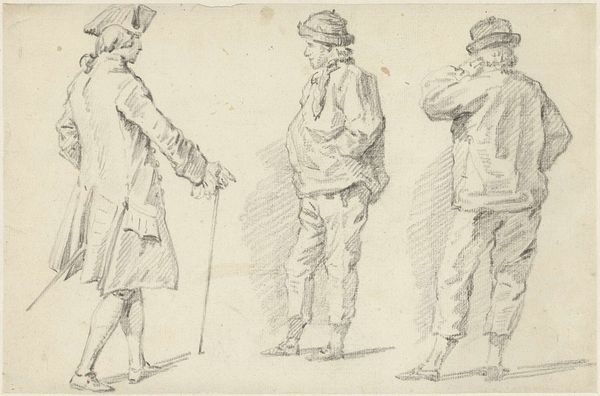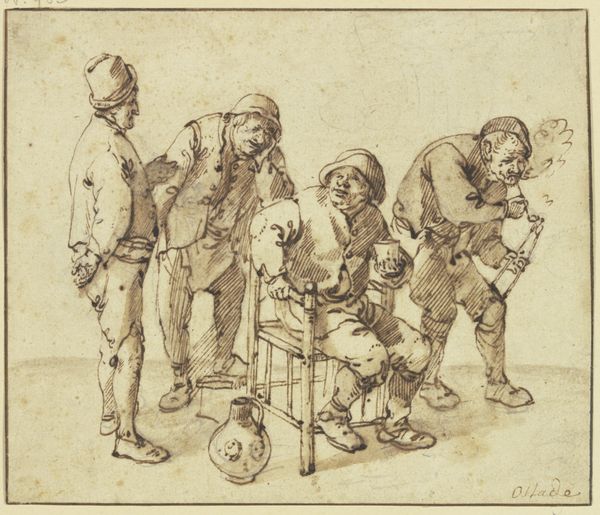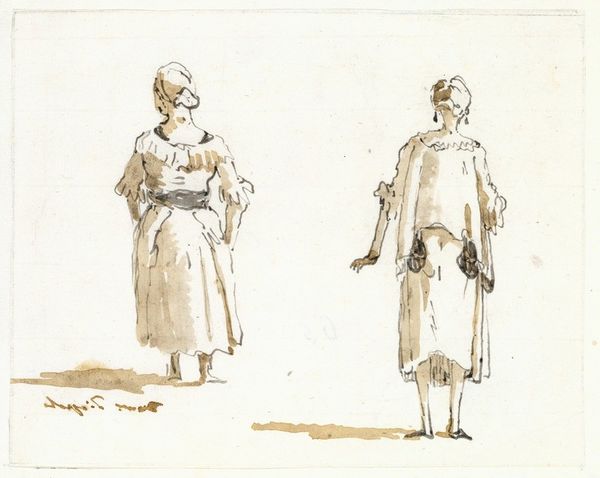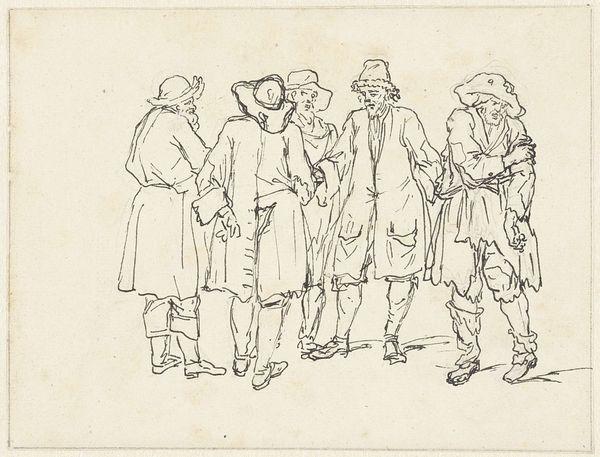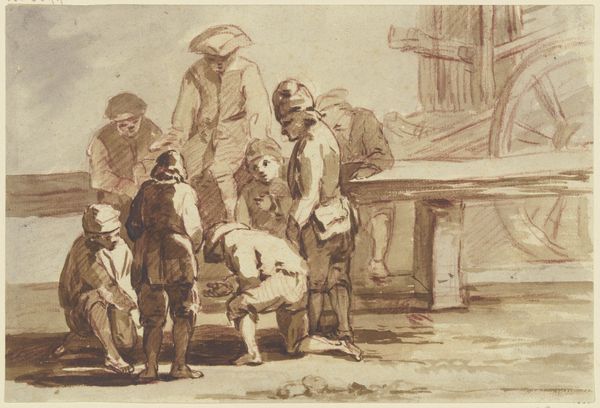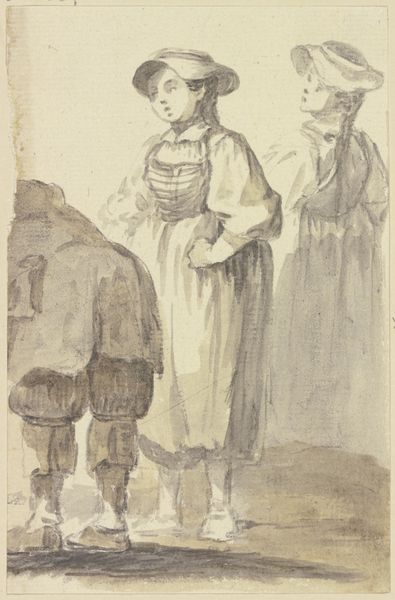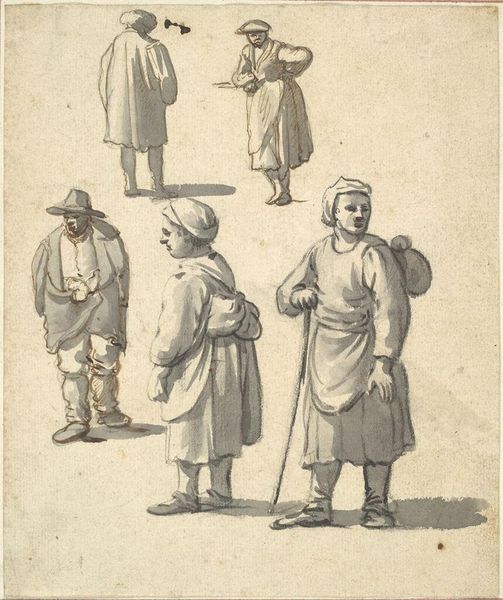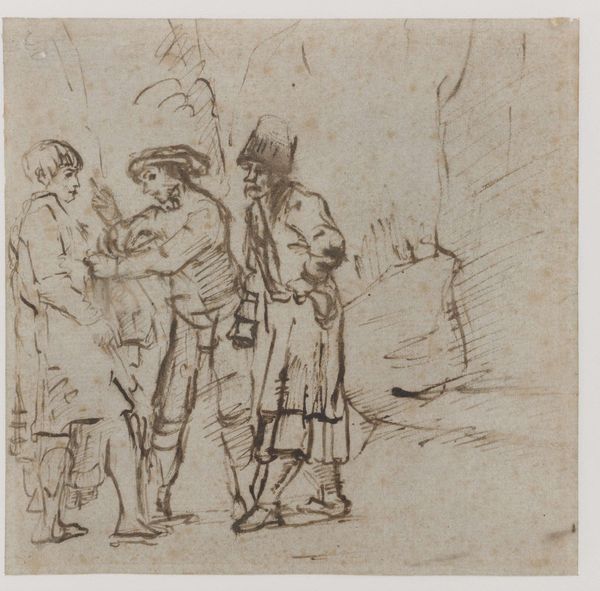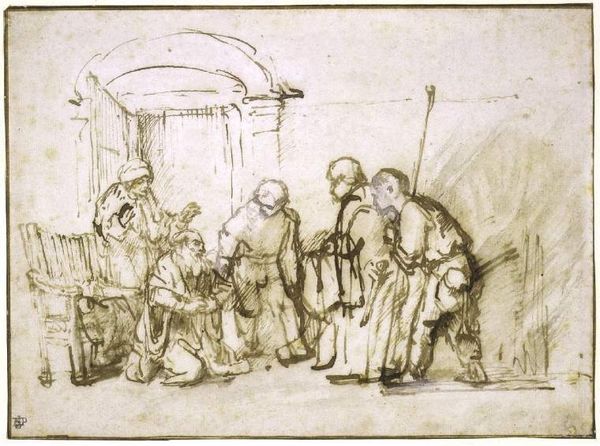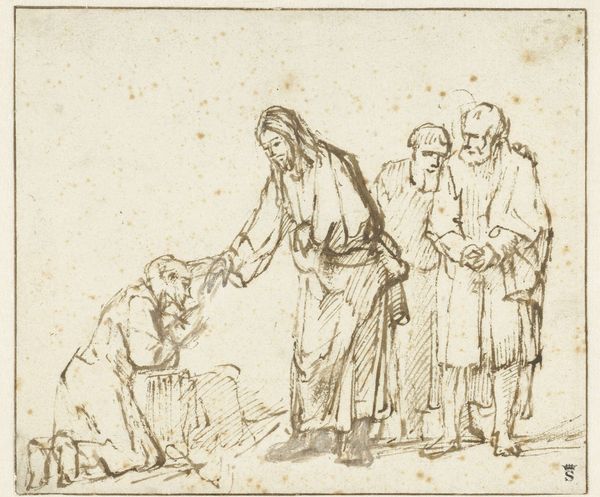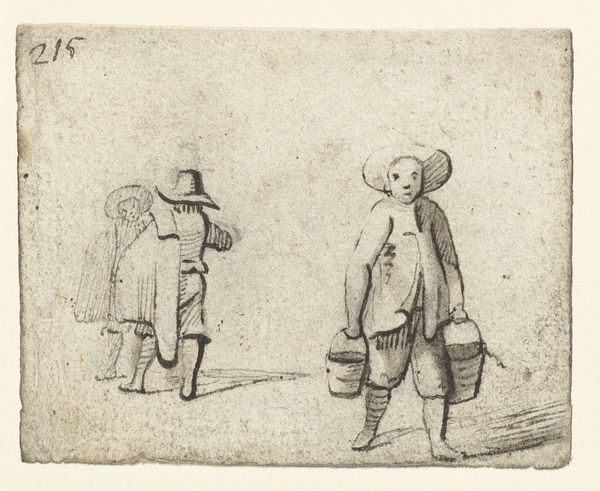
drawing, ink, pen
#
portrait
#
drawing
#
neoclacissism
#
light pencil work
#
quirky sketch
#
pencil sketch
#
incomplete sketchy
#
landscape
#
figuration
#
personal sketchbook
#
ink
#
sketchwork
#
sketchbook drawing
#
pen
#
genre-painting
#
sketchbook art
#
fantasy sketch
#
initial sketch
Dimensions: height 60 mm, width 180 mm
Copyright: Rijks Museum: Open Domain
Editor: This is "Italiaanse volkstypes" or "Italian Folk Types," a drawing done in pen, ink, and pencil between 1787 and 1811 by Victor Jean Nicolle. It has a delightfully casual and light feel to it, like a snapshot from a traveler's sketchbook. What catches your eye? Curator: Well, the immediate thing that strikes me is how it reminds us that “folk types” were once considered a worthy subject of study, and a visual way to classify human societies. Look at how the artist tries to capture not just their appearance but also a sense of their activities and social roles. Do you see the symbolic weight in these “types”? Editor: I do. There is one figure with a basket and another who seems to be restrained by another figure. Almost like representations of professions and human struggles? Curator: Exactly. Consider this during the Neoclassical period; there was a growing interest in portraying societies. These 'types' were loaded with perceived cultural values, hinting at larger narratives about Italian culture, perhaps even aspirations to categorize a complex nation through a few figures. What emotions do the figures elicit in you? Editor: Now that you point it out, it’s a bit melancholic. While the sketch style feels immediate, the idea of "types" feels like they are reducing individuals to symbols. Curator: That's a great observation. It is in these contradictions that the image truly resonates. The sketch work has the immediate feeling of catching a slice of real life but the underlying premise reflects the encyclopedic ambition of the age. There is both a human quality, and an element of cultural codification. What will you take away from viewing this? Editor: I see it as a reflection on how we understand and represent identity, both then and now. Curator: Indeed. Perhaps the most enduring symbol here is the artist himself, recording, interpreting, and leaving us with this echo of a world seen and classified.
Comments
No comments
Be the first to comment and join the conversation on the ultimate creative platform.
